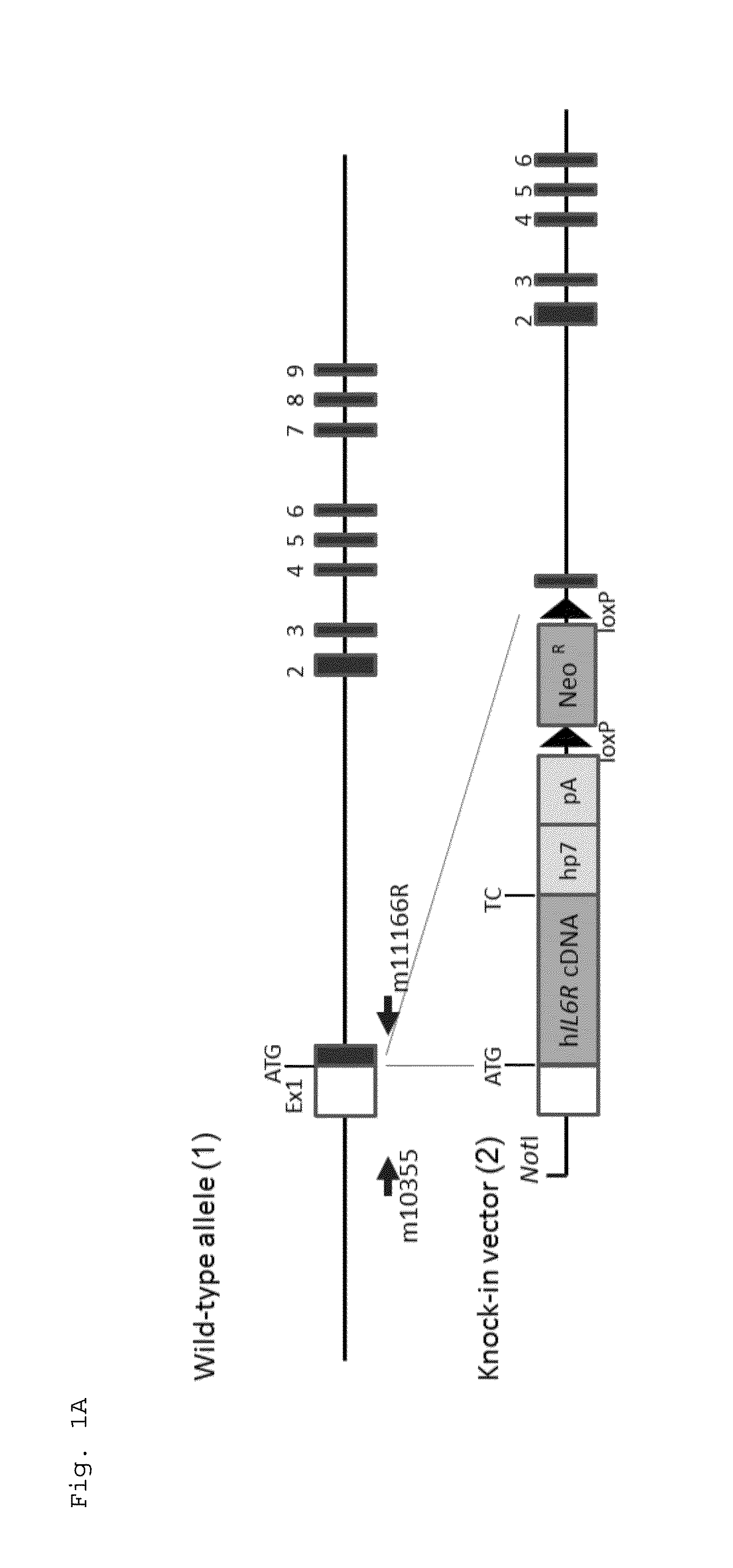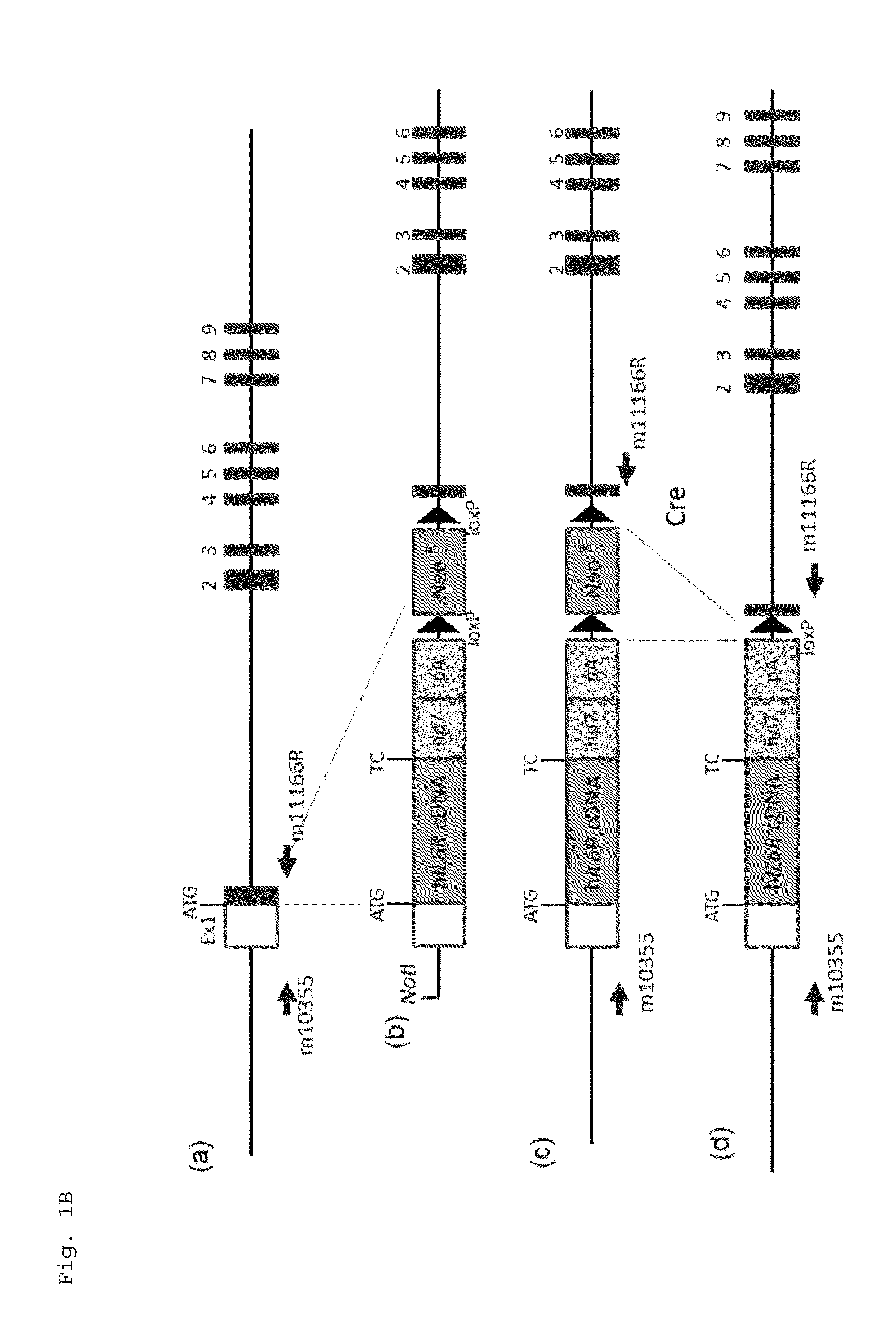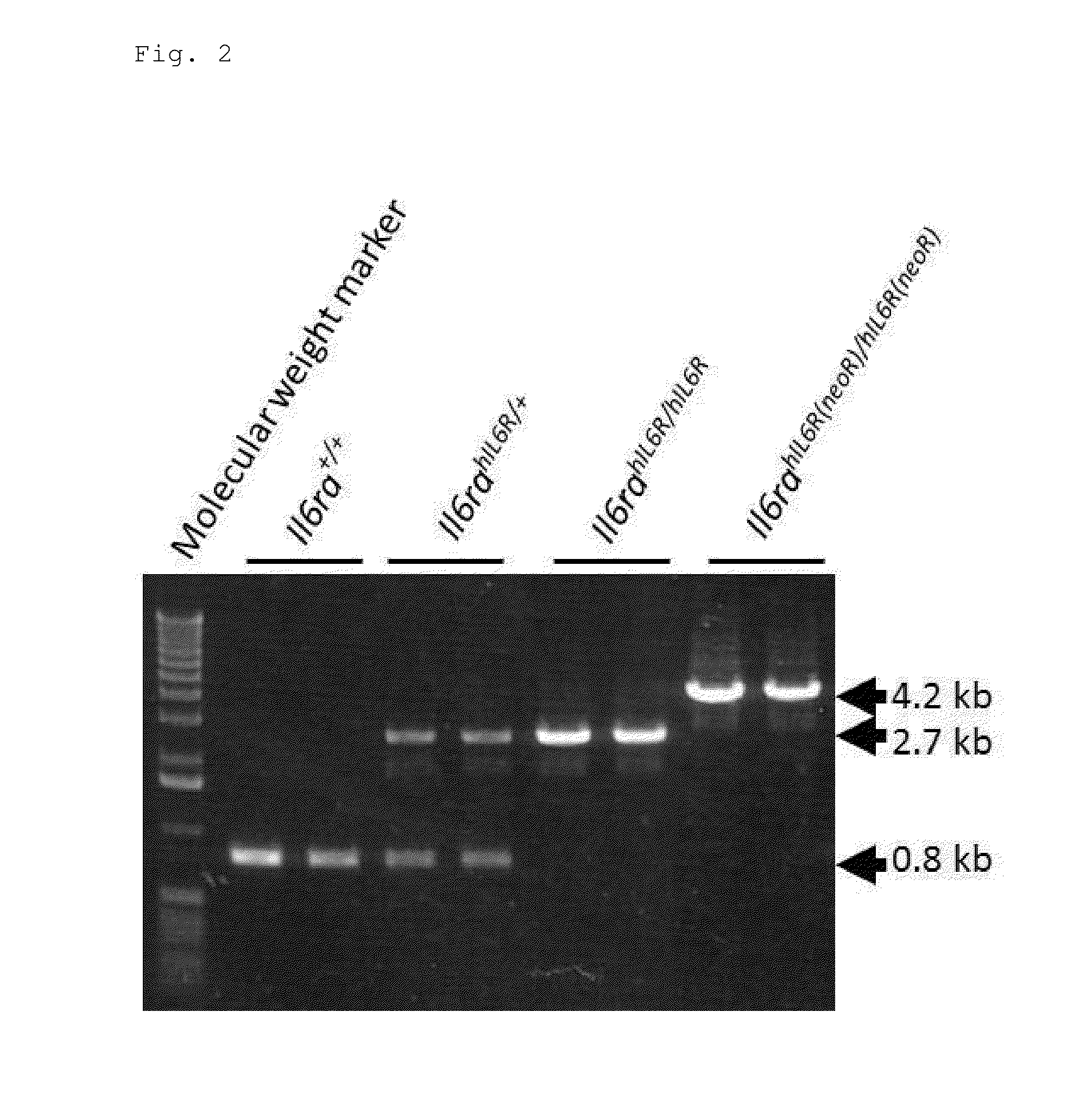Gene knock-in non-human animal
a non-human animal and gene technology, applied in the field of gene knock-in non-human animals, can solve the problems of difficult preparation of non-human animals capable of expressing foreign genes at a physiologically reasonable level, and the mere presence of human gene expression vectors often fails to exhibit expected expression patterns, so as to suppress the expression of endogenous genes
- Summary
- Abstract
- Description
- Claims
- Application Information
AI Technical Summary
Benefits of technology
Problems solved by technology
Method used
Image
Examples
example 1
Production of Human IL6R Gene Knock-in Mouse
(1) Construction of Knock-in Vector
[0080]An E. coli bacterial artificial chromosome (BAC) clone was used in which the genomic region of the mouse interleukin-6 gene (Il6ra) was cloned. A DNA fragment containing the coding sequence (GenBank #NM000565) of the human interleukin-6 receptor gene, an hp7 sequence, a poly A addition signal, a loxP sequence, a neomycin resistance (neo) gene cassette, and another loxP sequence connected in this order was inserted to the target region of the mouse Il6ra gene on the BAC through homologous recombination using Red / ET System (Gene Bridges GmbH). In this procedure, the DNA fragment was inserted in exon 1 of the mouse Il6ra gene on the BAC such that the translation initiation site of the human IL6R gene was consistent with a translation initiation site present in the exon 1, while only a 40-bp nucleotide sequence subsequent to the translation initiation site was deleted within the exon 1 of the mouse Il6r...
example 2
Establishment and Evaluation of Humanized Mouse Model of Castleman's Disease
(1) Establishment of Humanized Mouse Model of Castleman's Disease
[0094]Double transgenic mice were produced by the mating of hIL6R knock-in mice with H-2Ld human IL6 transgenic mice (Cytokine. 2002, Dec. 21; 20 (6): 304-311). The genotype was analyzed by PCR using a genomic DNA extracted from a tissue of each individual to select individuals having the homozygous hIL6R knock-in allele and the hIL6 transgene. The hIL6R knock-in allele was detected using the aforementioned PCR reaction system. Specifically, the composition of the PCR reaction solution was set to 1 μl of the sample, 12.5 μl of 2×GC buffer solution I, 4 μl of dNTP (2.5 mM), 0.25 μl each of primers (each 50 μM), 0.25 μl of LA Taq (Takara Bio Inc.), and 6.75 μl of distilled water (25 μl in total). The PCR conditions consisted of preheating at 94° C. for 4 minutes, 35 amplification cycles each involving 94° C. for 30 seconds, 62° C. for 30 seconds,...
example 3
Knock-in of Neomycin Resistance Gene to Mouse Pou5f1 Locus
(1) Construction of Knock-In Vector
[0102]The neomycin resistance (neo) gene was inserted in exon 1 of the mouse Pou5f1 gene such that the translation initiation site of the neomycin resistance (neo) gene was consistent with a translation initiation site present in the exon 1, while only a 107-bp nucleotide sequence subsequent to the translation initiation site was deleted within the exon 1 of the mouse Pou5f1 gene to construct a knock-in vector. By this procedure, two types of vectors were constructed: an hp7pA vector containing an hp7 sequence and a poly A addition signal connected immediately downstream of the termination codon of the neo gene; and a control vector to utilize its endogenous poly A addition signal without insertion both of the hp7 sequence and the poly A addition signal. A structure connected to a genomic DNA region up to 1.7 kb upstream of the aforementioned translation initiation site of the Pou5f1 gene an...
PUM
| Property | Measurement | Unit |
|---|---|---|
| concentration | aaaaa | aaaaa |
| body weight | aaaaa | aaaaa |
| weight | aaaaa | aaaaa |
Abstract
Description
Claims
Application Information
 Login to View More
Login to View More - R&D
- Intellectual Property
- Life Sciences
- Materials
- Tech Scout
- Unparalleled Data Quality
- Higher Quality Content
- 60% Fewer Hallucinations
Browse by: Latest US Patents, China's latest patents, Technical Efficacy Thesaurus, Application Domain, Technology Topic, Popular Technical Reports.
© 2025 PatSnap. All rights reserved.Legal|Privacy policy|Modern Slavery Act Transparency Statement|Sitemap|About US| Contact US: help@patsnap.com



